My junior year of high school, our class was assigned to read Thomas Hardy’s Return of the Native. Most of the class moaned and groaned about reading another book about staid Victorian people in corsets and bowler hats strolling about being polite to each other. But instead, what we got was a book that changed my entire perception of literature, and historic literature, specifically.
Because Thomas Hardy didn’t write polite novels. He didn’t write traditional morality tales that showed young ladies how to marry well, or how a gentleman could succeed in life by remaining sober and wearing cravats. Instead, he talks about people who make mistakes; big mistakes–the kind that can change and ruin lives. He talks about people who feel passion, who act on that passion, and who thrive because of it. And he does it all in a way that makes you feel their needs, sympathize with the sorrow and the joy they feel, and to be willing to follow the story through all the mistakes and hardships and triumphs because these people are so real and so beautifully flawed that it’s impossible to turn away.
Granted, Hardy was not a fan of general polite Victorian culture, because he saw through the façade that people so earnestly tried to put around themselves. In his diary, Hardy noted: “If all hearts were open and all desires known — as they would be if people showed their souls — how many gapings, sighings, clenched fists, knotted brows, broad grins, and red eyes should we see in the market-place!” And those are the kind of characters he created.
Hardy also gave the women in his novels agency, realizing how trapped they were by the society in which they lived, and how little they were normally allowed to speak. As the great Bathsheba notes in Far From the Madding Crowd, “It is difficult for a woman to define her feelings in language which is chiefly made by men to express theirs.” To be fair, Victorian society was not all that taken with Hardy, either–there were rumors that a Bishop burned a copy of his last novel Jude the Obscure because he felt it too obscene to exist.
Which brings us to the real topic of this post, which is the newest screen adaptation of Far From the Madding Crowd, an enormous, gorgeous, and surprisingly faithful adaptation that captures the beauty of Hardy’s all-too-human characters, quirks of fate, and the stunning scenery he describes in detail. It was clear early on that this film was going to be a crowd-pleaser. As soon as Gabriel Oak made his appearance on the screen, shyly returning Bathsheba’s wayward scarf, someone near me muttered “Oh just pick him! Right now!”. And when Sergeant Troy strode onto the scene in his scarlet uniform and polished boots, I definitely heard someone in the back call out “Look out, he’s bad news!”. Which only goes to show the power of Hardy’s work–and the skill of the filmmakers to convey the spirit of the piece so well.
So for those of you who were swept away by Hardy’s love story, by the sweeping panoramic views of the lush scenery, or simply want to know more about the world of this book and the man who created it, here are some suggestions:
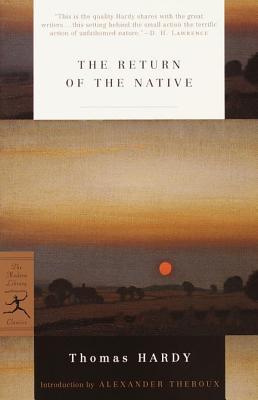 The Return of the Native: Because I just went on and on about this book, it seems silly not to put it on the list. Hardy’s sixth novel first appeared in serialized form from January to December of 1878, and opens with the arrival of Diggory Venn, a wandering reddleman (a man who sells the red dye with which farmers mark their sheep) to Egdon Heath. There, he encounters not only Thomasin Yeobright, a young woman with whom he is hopelessly in love (and who is engaged to the local innkeeper) and Eustacia Vye, herself an outsider who has recently returned to Egdon Heath to live with her grandfather. Though Eustacia is technically the wild and passionate heroine of this novel, my love is all for Diggory and Thomasin. Though Hardy had his own idea for how their fates played out, public response to their story, specifically, was so strong, he was forced to write the ending the public demanded…
The Return of the Native: Because I just went on and on about this book, it seems silly not to put it on the list. Hardy’s sixth novel first appeared in serialized form from January to December of 1878, and opens with the arrival of Diggory Venn, a wandering reddleman (a man who sells the red dye with which farmers mark their sheep) to Egdon Heath. There, he encounters not only Thomasin Yeobright, a young woman with whom he is hopelessly in love (and who is engaged to the local innkeeper) and Eustacia Vye, herself an outsider who has recently returned to Egdon Heath to live with her grandfather. Though Eustacia is technically the wild and passionate heroine of this novel, my love is all for Diggory and Thomasin. Though Hardy had his own idea for how their fates played out, public response to their story, specifically, was so strong, he was forced to write the ending the public demanded…
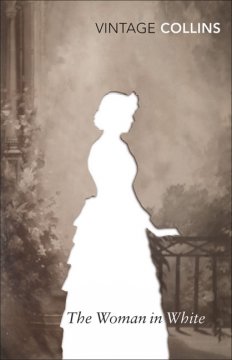 The Woman in White: Wilkie Collins was another author who delighted in criticizing Victorian culture (particularly marriage laws that limited women’s status in society), and whose books were considered quite scandalous by conventional society. This novel, published fifteen years before Far From the Madding Crowd, deals with the mystery surrounding two young women: Laura Fairlie and Anne Catherick. The two could not be from more different worlds– Laura is the daughter of a wealthy family who is engaged to the handsome Sir Percival Glyde, while Anne is a troubled escapee from the local insane asylum–but the two woman are identical in appearance. The man who makes the connection between the two is Walter Hartright, the man hired to give drawing lessons to Laura and her sister, and man who steals Laura’s heart. This book is considered among the first modern mystery novels, though there is a wonderful romantic subplot to enjoy, as well, and is told through various characters’ letters and testimony, making the narrative that much more complex and fascinating.
The Woman in White: Wilkie Collins was another author who delighted in criticizing Victorian culture (particularly marriage laws that limited women’s status in society), and whose books were considered quite scandalous by conventional society. This novel, published fifteen years before Far From the Madding Crowd, deals with the mystery surrounding two young women: Laura Fairlie and Anne Catherick. The two could not be from more different worlds– Laura is the daughter of a wealthy family who is engaged to the handsome Sir Percival Glyde, while Anne is a troubled escapee from the local insane asylum–but the two woman are identical in appearance. The man who makes the connection between the two is Walter Hartright, the man hired to give drawing lessons to Laura and her sister, and man who steals Laura’s heart. This book is considered among the first modern mystery novels, though there is a wonderful romantic subplot to enjoy, as well, and is told through various characters’ letters and testimony, making the narrative that much more complex and fascinating.
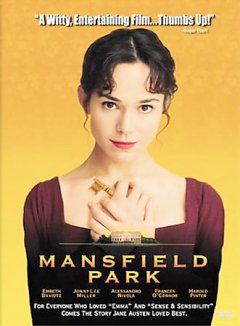 Mansfield Park: Specifically this adaptation, with Frances O’Connor as Fanny Price and a charmingly young Johnny Lee Miller as Edmund. Though there are others that are perhaps more faithful to Jane Austen’s text (mostly because they are mini-series that have more time to deal with the material), this movie beautifully captures the character’s complexities, shortcomings and successes, and conveys the love story between poor but independent Fanny and the wonderfully caring, duty-bound Edmund perfectly. Like Far From the Madding Crowd, Mansfield Park is the story of two people who are meant for each other, but it takes a lot of effort, and a few twists of fate to get them to realize it. This adaptation also incorporates a good deal of Austen’s actual writings into the text, in the form of Fanny’s diaries and scribblings.
Mansfield Park: Specifically this adaptation, with Frances O’Connor as Fanny Price and a charmingly young Johnny Lee Miller as Edmund. Though there are others that are perhaps more faithful to Jane Austen’s text (mostly because they are mini-series that have more time to deal with the material), this movie beautifully captures the character’s complexities, shortcomings and successes, and conveys the love story between poor but independent Fanny and the wonderfully caring, duty-bound Edmund perfectly. Like Far From the Madding Crowd, Mansfield Park is the story of two people who are meant for each other, but it takes a lot of effort, and a few twists of fate to get them to realize it. This adaptation also incorporates a good deal of Austen’s actual writings into the text, in the form of Fanny’s diaries and scribblings.
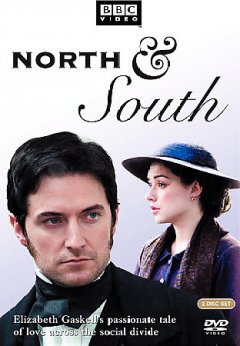 North and South: There is a very real chance that this is the most romantic mini-series adaptation ever made. On the plus side, though, like Far From the Madding Crowd, it also handles the setting and social commentary of Elizabeth Gaskell’s work, as well. The story itself centers on the privileged Margaret Hale (played by Daniela Denby-Ashe), whose father moves the family to the mill town of Milton. There, Margaret is shocked by the gruffness of the people and the general ugliness of the factories–and especially turned off by the mill owner, John Thornton (played by the incomparable Richard Armitage). But Thornton, and Milton as a whole, it seems, have some hidden depths…What makes this story so wonderful is not only how their love changes Margaret and John for the better, but how that love improves the world around them, as well.
North and South: There is a very real chance that this is the most romantic mini-series adaptation ever made. On the plus side, though, like Far From the Madding Crowd, it also handles the setting and social commentary of Elizabeth Gaskell’s work, as well. The story itself centers on the privileged Margaret Hale (played by Daniela Denby-Ashe), whose father moves the family to the mill town of Milton. There, Margaret is shocked by the gruffness of the people and the general ugliness of the factories–and especially turned off by the mill owner, John Thornton (played by the incomparable Richard Armitage). But Thornton, and Milton as a whole, it seems, have some hidden depths…What makes this story so wonderful is not only how their love changes Margaret and John for the better, but how that love improves the world around them, as well.
Additionally, for those of you who enjoyed the folk songs that were an integral part of this movie, or traditional music in general, here are some CDs to check out: Kate Rusby is a sensational folk musician and songwriter who has really been at the forefront of folk revival in the UK. The King’s Singers are a choral group with a much more much more formal sound, but their repertoire includes a wide range of folk songs from around Britain–Try Annie Laurie and Watching the White Wheat for some great selections. For those looking for a different, more contemporary sound, Great Big Sea is a Canadian group whose roots are in sea shanties and folk songs. Check out The Hard and the Easy for some great examples.

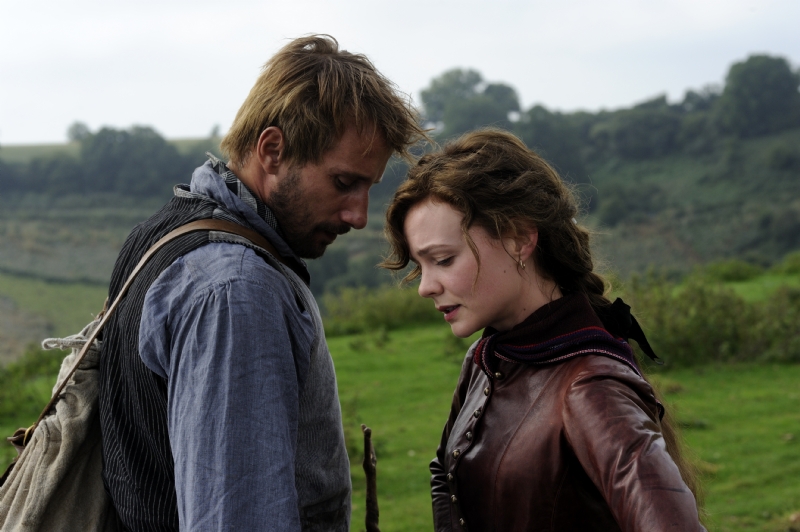
Beautiful looking film is missing the lyricism of the ’67 version. The loss of almost an hour’s running time hurts the story. As for the performances Carey Mulligan (http://careymulligan.org/) is a more somber Bathsheba than Julie Christie was, that’s not bad just different and Matthias Schoenaerts is very good as Gabriel Oak. Michael Sheen is the main sufferer, along with Juno Temple as Fanny Robin, from the editing of the story losing a great deal of character depth in Boldwood but he does what he can. Sturridge however is a disaster as Sgt. Troy, a blank slate who does things with no real rhyme nor reason. It’s the actor not the role because Terence Stamp made him electric in the earlier version.